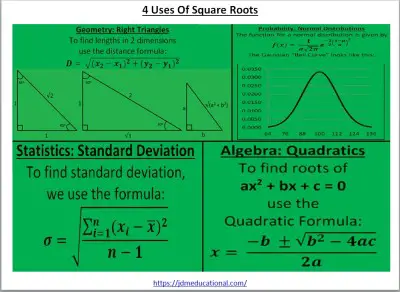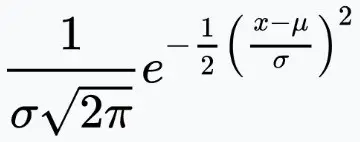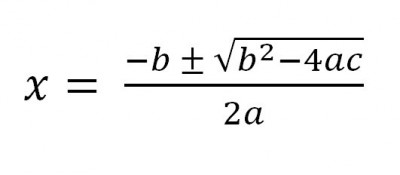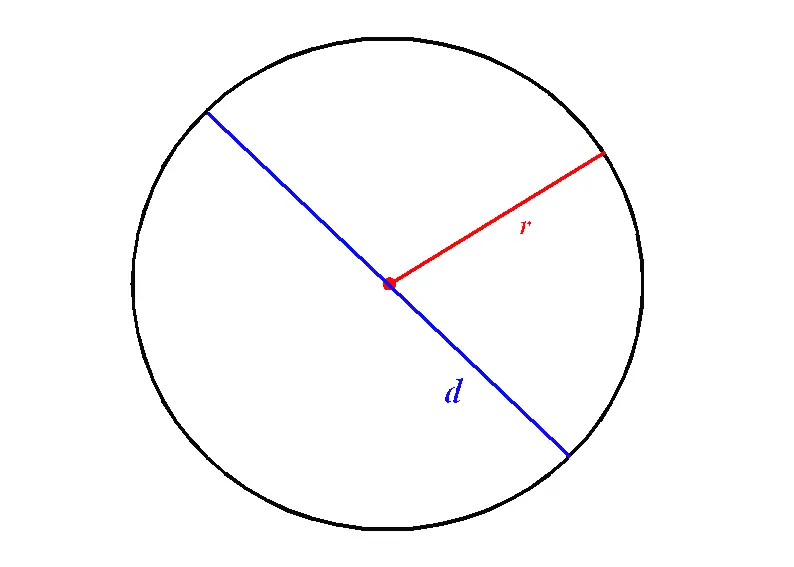Once you know how to calculate a square root, you might be curious to learn how to apply this concept in real life. Although square roots are used often in math, they also have applications in many other disciplines.
So, what is a square root used for? Square roots are used in finance (rates of return over 2 years), normal distributions (probability density functions), lengths & distances (Pythagorean Theorem), quadratic formula (height of falling objects), radius of circles, simple harmonic motion (pendulums & springs), and standard deviation.
Of course, square roots are not the only roots we can use. Cube roots, fourth roots, and other roots can also help us in various science and technology fields.
In this article, we’ll talk about what square roots are used for and how they fit into various equations and formulas. We’ll also give some examples to make the concepts clear.
Let’s get started (you can watch a video version of this article on YouTube).

What Is A Square Root Used For?
Square roots are used throughout mathematics and have applications in many disciplines, such as probability, statistics, physics, architecture, and engineering.
Here are some uses of square roots in real life:
- Finance (Rates Of Return Over 2 Years)
- Normal Distributions (Probability Density Function)
- Pythagorean Theorem (Lengths & Distances)
- Quadratic Formula (Height Of Falling Objects)
- Radius Of Circles With A Given Area
- Simple Harmonic Motion (Pendulums & Springs)
- Standard Deviation (Measuring the spread of data)
Let’s take a look at each one in turn, starting with finance.
Square Roots In Finance
In the field of finance, we can use square roots to find the rate of return on an asset over a time period with 2 units (for example, 2 years, 2 months, etc.)
The formula for the annual rate of return over a 2 year time period is given by:
- R = √(V2 / V0) – 1
where R is the annual rate of return, V0 is the starting value, and V2 is the value after 2 years.
Example 1: Rate Of Return Of An Asset Over 2 Years
Let’s say that you buy a stock on January 1, 2020 for $100.
You sell the stock on January 1, 2022 for $196.
This means that:
- V0 = 100 (you bought the stock for $100)
- V2 = 196 (you sold the stock for $196)
Since the time period was 2 years (January 1, 2020 to January 1, 2022), we can use the formula for annual rate of return over 2 years to get:
- R = √(V2 / V0) – 1
- R = √(196 / 100) – 1
- R = √(1.96) – 1
- R = 1.4 – 1
- R = 0.4
As a decimal, R = 0.4 means an annual return of 40% (move the decimal 2 places to the right to convert a decimal to a percent).
So, the stock returned 40% annually, which is a good investment.

Example 2: Rate Of Return Of An Asset Over 2 Months
Let’s say that you buy a house on January 1, 2020 for $250,000.
You sell the house on March 1, 2022 for $302,500.
This means that:
- V0 = 250,000 (you bought the stock for $250,000)
- V2 = 302,500 (you sold the stock for $302,500)
Since the time period was 2 months (January 1, 2020 to March 1, 2020), we can use the formula for annual rate of return over 2 months to get:
- R = √(V2 / V0) – 1
- R = √(302,500 / 250,000) – 1
- R = √(1.21) – 1
- R = 1.1 – 1
- R = 0.1
As a decimal, R = 0.1 means a monthly return of 10% (move the decimal 2 places to the right to convert a decimal to a percent).
So, the house returned 10% monthly, which is a good investment.
More generally, we can use the nth root to find the rate of return over a time period with n units. The formula is given by:
- R = (Vn / V0)1/n – 1
where R is the rate of return per time period, V0 is the starting value, and Vn is the value after n time periods.

Square Roots In Normal Distributions
The normal distribution also uses a square root, although it is not easy to see from the graph (which has the shape of a symmetric bell curve).

The square root in a normal distribution can be seen in its pdf (probability density function), which is given by:

Without square roots, we could not define the function that gives us a normal distribution curve. This distribution is used throughout mathematics, science, medicine, psychology, and other fields.
Square Roots & The Pythagorean Theorem
From the Pythagorean Theorem, we can use square roots to find distances and lengths of sides of triangles in 2 dimensions (or 3 dimensions).
This can be useful in all sorts of applications, such as:
- Architecture & Engineering (finding lengths of trusses to hold up bridges and buildings).
- Carpentry & Construction (finding lengths of sides of right triangles for diagonal supports).
- Graphics (finding distances in a 2D or 3D grid system for movies or video games).

Remember that the Pythagorean Theorem applies to a right triangle (one with a 90 degree angle), and is given by the formula:
- a2 + b2 = c2
where a and b are the legs (two shorter sides) and c is the hypotenuse (the longest side, across from the right angle) in a right triangle.
To solve for the hypotenuse, we simply take the square root of both sides of the equation to get:
- √(a2 + b2) = c
To solve for one of the other sides (let’s say a), we subtract b2 from both sides and take the square root of both sides:
- a2 + b2 = c2
- a2 = c2 – b2
- a = √(c2 – b2)
Example 1: Length Of The Hypotenuse Of A Right Triangle
Let’s say that we have a right triangle with sides 6 feet and 8 feet. We want to find the length of the hypotenuse (the longest side) to find out how long a diagonal support should be.
Using the Pythagorean Theorem with a = 6 and b = 8, we get:
- √(a2 + b2) = c
- √(62 + 82) = c
- √(36 + 64) = c
- √(100) = c
- 10 = c
So, the diagonal support should be 10 feet long. (Note: this 6-8-10 right triangle is just a multiple of a 3-4-5 right triangle – that is, they are similar.)
Example 2: Length Of A Leg Of A Right Triangle
Let’s say that we have a right triangle with one leg that is 7 feet long and a diagonal (hypotenuse) that is 13 feet long. We want to find the length of the other leg.
Using the Pythagorean Theorem with a = 7 and c = 13, we get:
- a = √(c2 – b2)
- a = √(132 – 72)
- a = √(169 – 49)
- a = √(120)
So, the other leg has a length of √120 or 2√30 feet.
Remember that the side lengths of some special triangles will also use square roots for some of their side lengths.
For example, a 45-45-90 triangle (right isosceles) will have side lengths in the ratio 1-1-√2.
A 30-60-90 triangle will have side lengths in the ratio 1-√3-2.
| Angles In Triangle | Ratios Of Sides |
|---|---|
| 30-60-90 | 1-√3-2 |
| 45-45-90 | 1-1-√2 |
lengths of some common
triangles.
Square roots can also be used to find the distance between two points in a 2-dimensional or 3-dimensional system for movie or video game production.
The formula for the distance D between two points (x1, y1) and (x2, y2) in 2 dimensions is given by:
- D = √((x2 – x1)2 + (y2 – y1)2)
Note that this formula comes from the Pythagorean Theorem, where the legs of the right triangle have length x2 – x1 and y2 – y1, and the hypotenuse has length D.
The formula for the distance D between two points (x1, y1, z1) and (x2, y2, z2) in 3 dimensions is given by:
- D = √((x2 – x1)2 + (y2 – y1)2 + (z2 – z1)2)
Example 1: Distance Between Two Points In 2 Dimensions
Let’s say we want to find the distance between the points (1, 3) and (8, -5). If we assign (x1, y1) = (1, 3) and (x2, y2) = (8, -5), then we can use the distance formula to calculate:
- D = √((x2 – x1)2 + (y2 – y1)2)
- D = √((8 – 1)2 + (-5 – 3)2)
- D = √((7)2 + (-8)2)
- D = √(49+ 64)
- D = √(113)
So, the distance between the two points in 2 dimensions is √113.
Example 2: Distance Between Two Points In 3 Dimensions
Let’s say we want to find the distance between the points (2, 4, 7) and (1, -4, 0). If we assign (x1, y1, z1) = (2, 4, 7) and (x2, y2, z2) = (1, -4, 0), then we can use the distance formula to calculate:
- D = √((x2 – x1)2 + (y2 – y1)2 + (z2 – z1)2)
- D = √((1 – 2)2 + (-4 – 4)2 + (0 – 7)2)
- D = √((-1)2 + (-8)2 + (-7)2)
- D = √(1 + 64 + 49)
- D = √(114)
So, the distance between the two points in 3 dimensions is √114.
Square Roots In The Quadratic Formula
Square roots are also necessary if we want to use the quadratic formula to solve a quadratic equation.
Remember that a quadratic equation has the standard form
- ax2 + bx + c = 0
where a, b, and c are real numbers, with a nonzero.
The solutions of this quadratic equation are given by the quadratic formula:

Note that there is a square root in the numerator of the fraction. This square root symbol is important because the radicand (expression under the radical) tells us the nature of the solutions.
This particular radicand b2 – 4ac is called the discriminant, and its sign tells us what the roots of the quadratic equation will look like:
- b2 – 4ac > 0 (positive discriminant): this means that there are two distinct real solutions to the quadratic equation.
- b2 – 4ac = 0 (zero discriminant): this means that there is one real repeated solution (a double root) to the quadratic equation.
- b2 – 4ac < 0 (negative discriminant): this means that there are two complex conjugate solutions to the quadratic equation.
We might need to solve a quadratic equation in physics if we want to know when a falling object is at a certain height.
Example: Solving A Quadratic For Height Of A Falling Object
If an object is dropped from 400 feet above ground, then its height after t seconds is given by the equation
- h(t) = 400 – 16t2
Let’s say we want to find out when the object is at a height of 144 feet. Then we would solve:
- 144 = 400 – 16t2
- -256 = – 16t2
- 16 = t2
- 4 = t
So, the falling object will be at a height of 144 feet above ground at t = 4 seconds (after it has fallen 256 feet from its starting position).
Square Roots & Radius Of A Circle
If you want to find the radius of a circle with a particular area, then you will need to use square roots.

Remember that the area A of a circle with radius R is given by the equation
- A = πR2
Where π is the constant pi, or approximately 3.14159.
We can also use square roots to find the radius of the base of a cylinder or cone with a particular volume (as long as we also know the height).
Remember that if the height of a cylinder or cone is H and the radius is R, then the volume equations are:
- Volume Of A Cylinder: V = πR2H
- Volume Of A Cone: V = πR2H / 3
Example 1: Radius Of A Circle
Let’s say we want to build a circular animal pen with an area of 1256 square feet.
Using our area equation with A = 1256, we can calculate:
- A = πR2
- 1256 = 3.14159R2
- 399.80 = R2
- 20 = R
So, the radius of the pen would be 20 feet.
Example 2: Radius Of A Circle At The Base Of A Cylinder
Let’s say we want to make a cylinder that is 7 inches tall and has a volume of 2200 square inches.
Using our volume equation with V = 2200, we can calculate:
- Volume Of A Cylinder: V = πR2H
- 2200 = (3.14159)R2(7)
- 2200 = 21.99113R2
- 100.04 = R2
- 10 = R
So, the radius of the cylinder would be 10 inches.

Square Roots & Simple Harmonic Motion
In physics, we often use square roots in formulas for simple harmonic motion to find the period of a spring or a pendulum. The period is the amount of time it takes for them to go through one cyclical motion.
The formulas are:
- Period of a Spring: T = 2π√(m/k)
- Period of a Pendulum: T = 2π√(L/g)
where T is the period, m is the mass of a spring, k is the spring constant, L is the length of the pendulum, and g is the acceleration due to gravity.
Note that the spring constant will vary depending on the type of spring. A stiffer spring has a higher value of k.
Example 1: Period Of A Spring
Let’s say we have a spring with a spring constant of 4 N/m and a weight of 0.25 kg at the end of the spring.
Using our formula for period, we get:
- Period of a Spring: T = 2π√(m/k)
- T = 2(3.14159)√(0.25/4)
- T = 2(3.14159)√(1/16)
- T = 2(3.14159)(1/4)
- T = 3.14159/2
- T = 1.5708
So, the period of the spring is 1.5708 seconds.

Example 2: Period Of A Pendulum
Let’s say we have a pendulum with a length of 0.5 feet (assuming we are on Earth, the acceleration due to gravity is 32 feet per second).
Using our formula for period, we get:
- Period of a Pendulum: T = 2π√(L/g)
- T = 2(3.14159)√(0.5/32)
- T = 2(3.14159)√(1/64)
- T = 2(3.14159)(1/8)
- T = (3.14159)(1/4)
- T = 0.7854
So, the period of the pendulum is 0.7854 seconds.

Square Roots & Standard Deviation
In statistics, we use square roots to calculate the standard deviation (from the variance). The standard deviation is the square root of variance, which is a sum of squared differences from the mean of a data set.

The square root ensures that the standard deviation will have the same units as the mean. This makes it meaningful to talk about adding or subtracting standard deviations from the mean.
This makes it possible to talk about percentiles in a population.
You can learn more about what affects standard deviation in my article here.
You can learn about some real-life examples of standard deviation in my article here.
Conclusion
Now you know what square roots are used for and where they fit into the equations and formulas where they apply.
You can learn how to add, multiply, and divide square roots here.
You can learn how to do square roots by hand in my article here.
You can also learn how to graph square roots in my article here.
You can learn how to take the derivative of a square root function here.
Learn more about square roots and other radicals in denominators (and how to rationalize them) here.
I hope you found this article helpful. If so, please share it with someone who can use the information.
Don’t forget to subscribe to my YouTube channel & get updates on new math videos!
~Jonathon


